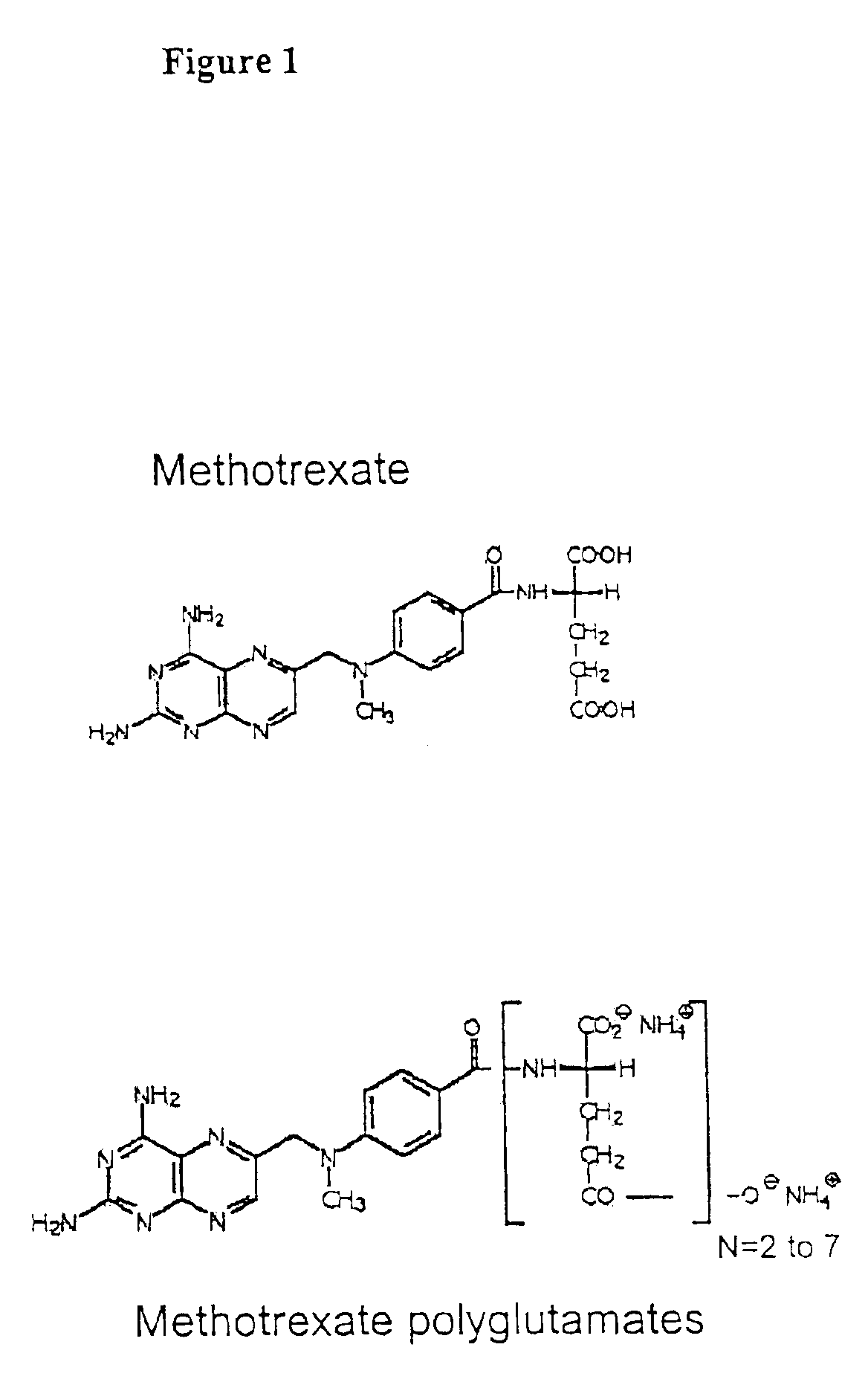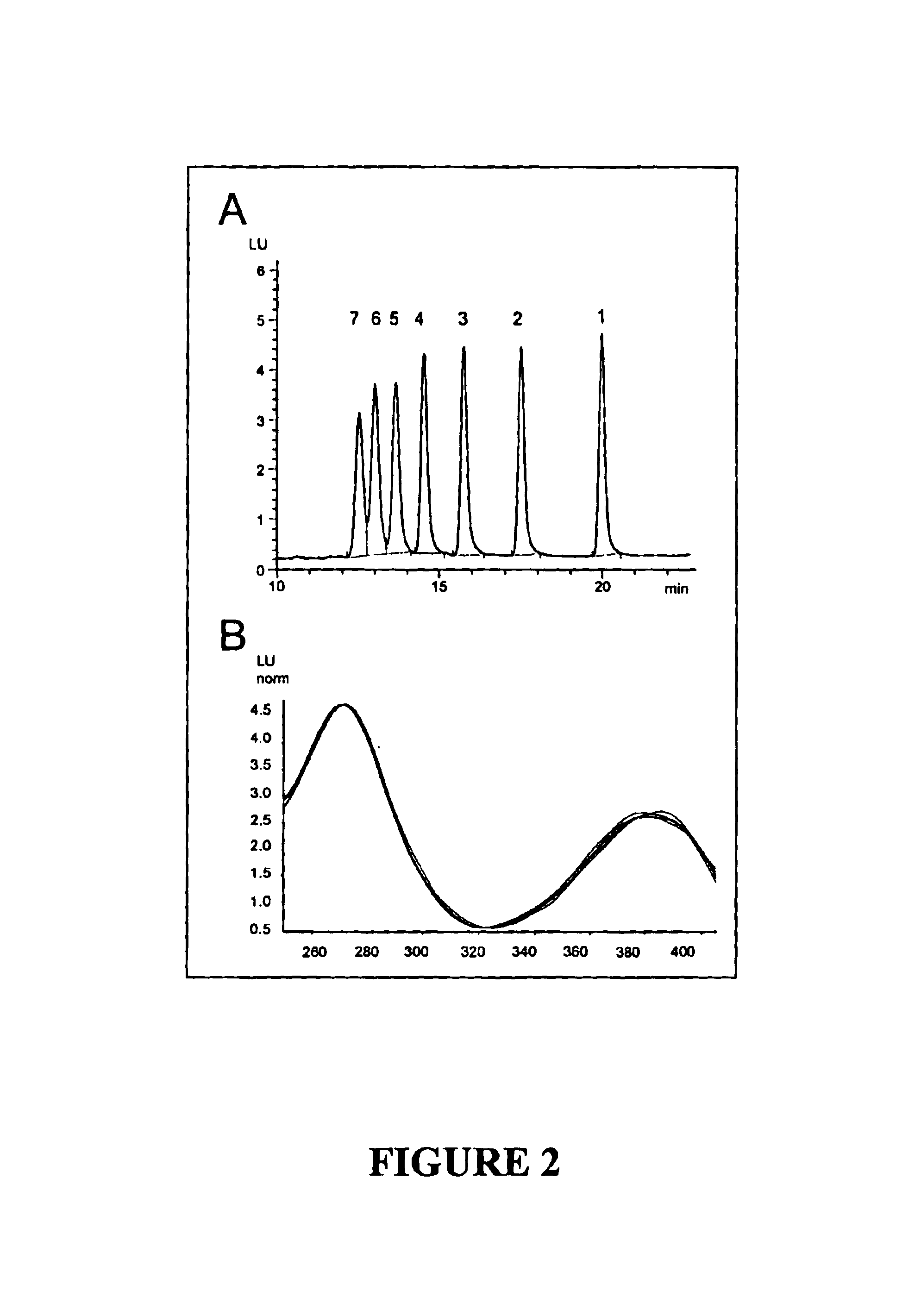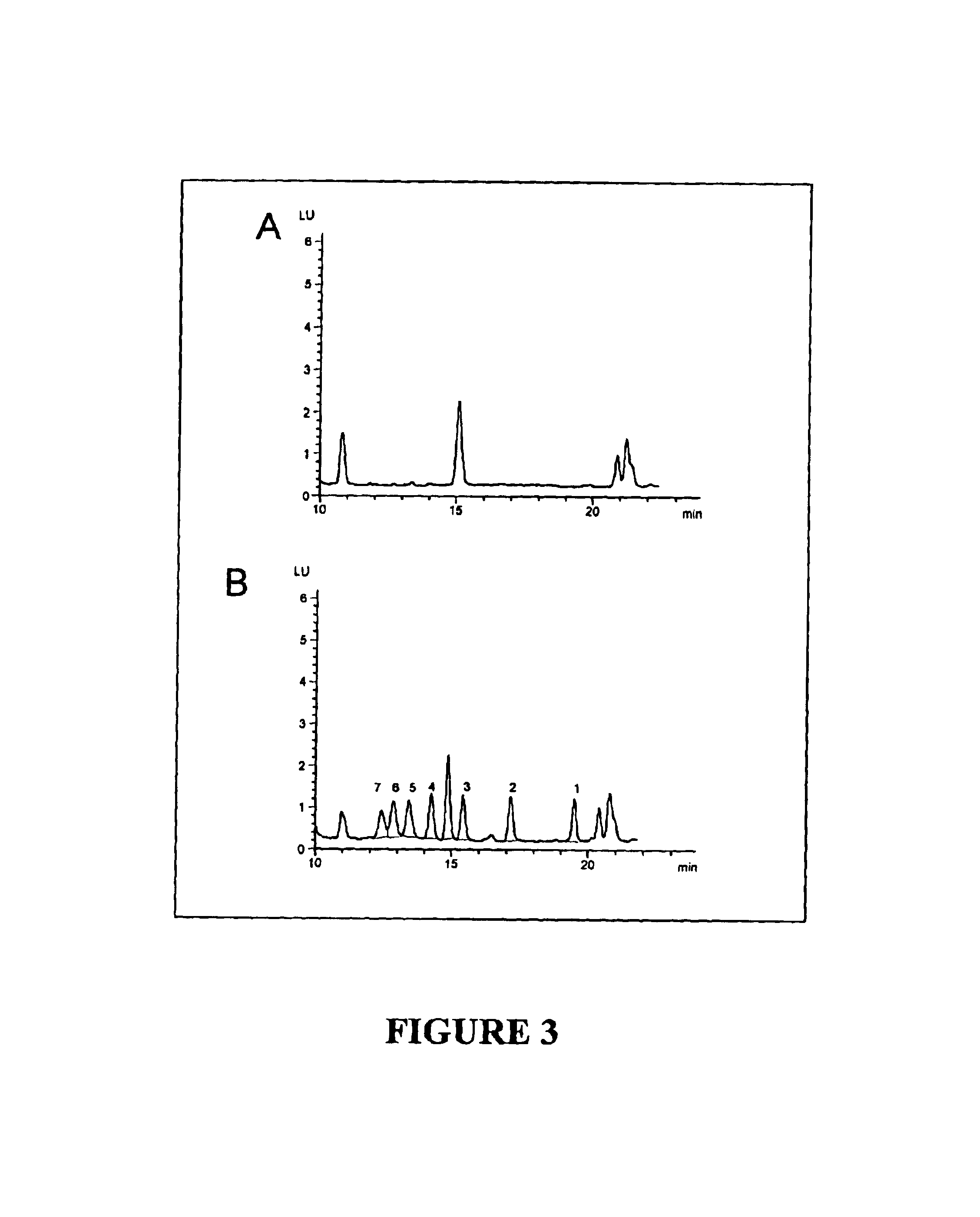Methods for direct detection of individual methotrexate metabolites
a technology of methotrexate and metabolites, applied in the field of monitoring the efficacy and toxicity of methotrexate drug therapy, can solve the problems of inability to use as cofactors, dna biosynthesis, cell division, etc., and achieve the effects of reducing toxicity, reducing or increasing the dosage of methotrexate, and optimizing the therapeutic
- Summary
- Abstract
- Description
- Claims
- Application Information
AI Technical Summary
Benefits of technology
Problems solved by technology
Method used
Image
Examples
example i
An HPLC System Suitable for Detection of Methotrexate Polyglutamates in Samples from Individuals Undergoing Low-Dose Methotrexate Therapy
[0074]This example describes a chromatographic system, conditions and reagents suitable for separation of methotrexate polyglutamates in cell samples.
A. Preparation of Reagents
[0075]4-amino-10-methylpteroylglutamic acid (methotrexate; MTXPG1) was purchased from SIGMA (St. Louis, Mo.). 4-amino-10-methylpteroyldi-glutamic acid (MTXPG2), 4-amino-10-methylpteroyltri-glutamic acid (MTXPG3), 4-amino-10-methylpteroyltetra-glutamic acid (MTXPG4), 4-amino-10-methylpteroylpenta-glutamic acid (MTXPG5), 4-amino-10-methylpteroylhexa-glutamic acid (MTXPG6), and 4-amino-10-methylpteroylhepata-glutamic acid (MTXPG7) were purchased as ammonium salts from Schircks laboratories (Jona, Switzerland). HPLC grade acetonitrile was purchased from Fisher Chemicals (Fair Lawn, N.J.); hydrogen peroxide (30%, v / v), ammonium hydroxide, and glacial acetic acid were obtained from...
example ii
Quantification of Methotrexate Polyglumamate Concentration in Red Blood Cell Extracts by HPLC Fluorometry with Post-Column Derivatization
[0085]This example describes determination of the intracellular concentration of methotrexate polyglutamates in patients treated with low-dose methotrexate therapy.
A. Separation and Detection of Methotrexate and Methotrexate Polyglutamates in Cellular Samples
[0086]A chromatogram of a standard containing all seven methotrexate polyglutamates at a final concentration of 25 nmol / L each in water is presented in FIG. 2A. The retention times of individual methotrexate polyglutamates on the HPLC system described above were as follows: MTXPG7: 12.5 minutes; MTXPG6: 13.0 minutes; MTXPG5: 13.7 minutes; MTXPG4: 14.5 minutes; MTXPG3: 15.7 minutes; MTXPG2: 17.5 minutes; and MTXPG1: 19.8 minutes. As shown in FIG. 2B in which the excitation spectra of MTXPG1 through MTXPG7 photolytic products are overlaid, the spectra of the different photolytic products are esse...
PUM
 Login to View More
Login to View More Abstract
Description
Claims
Application Information
 Login to View More
Login to View More - R&D
- Intellectual Property
- Life Sciences
- Materials
- Tech Scout
- Unparalleled Data Quality
- Higher Quality Content
- 60% Fewer Hallucinations
Browse by: Latest US Patents, China's latest patents, Technical Efficacy Thesaurus, Application Domain, Technology Topic, Popular Technical Reports.
© 2025 PatSnap. All rights reserved.Legal|Privacy policy|Modern Slavery Act Transparency Statement|Sitemap|About US| Contact US: help@patsnap.com



